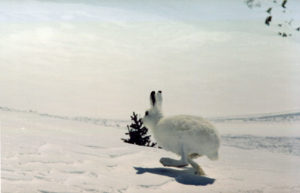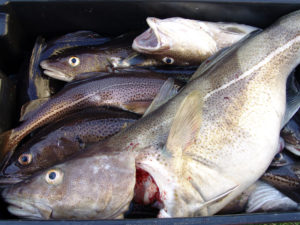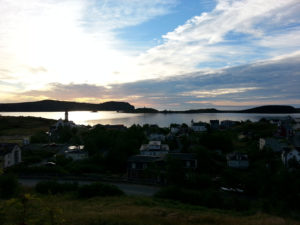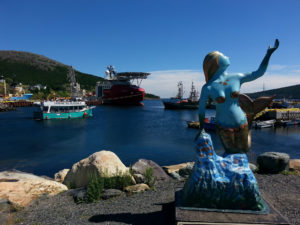A post by Mark McCarthy:
“What we lost from the land we gained in the sea !” My father has often used this wonderful expression when he attempts to explain the Newfoundlander’s attraction and willingness to populate an island whose rocky coastline is located in such a challenging climatic zone. Our province’s nickname ‘The Rock’ is coined from a most honest and appropriate assessment of our topography and landscape. Even in the most heavily forested regions a fallen tree’s root system reveals an especially thin covering of soil. There is little variety of aquatic species in our inland waterways and only 14 mammal species can claim indigenous status on the island – and I’m not one of them.
Of course, it wasn’t always like this. In fact it would really be quite the opposite. Millions of years of eroded material from Newfoundland’s mountain ranges would have provided ample soil to support a lush variety of plants, and animals. But that was before the last ‘Ice Age’ when a slight shift in the world’s climatic condition completely covered Newfoundland in a thick bed of slow moving ice that scraped nearly every single living plant and creature from the face of the island, and deposited it as a coastal plain or continental shelf that became the richest fishing grounds in the world – ‘The Grand Banks’.
This nearly uniform deposit of rich soil and organic material, when combined with idyllic water temperatures, a rich flush of nutrients from two of the world’s most polarized ocean currents (the warm ‘Gulf Stream’ and the frigid ‘Labrador Current’), perfect lighting, ample feed, and very few predators, created the perfect environment for fish to multiply prolifically. More importantly, the dominant species in this rich ecosystem would prove to be the most sought after and valued fish in the world – Cod.
In the days before refrigeration, cod was king. An excellent source of protein that, when treated with salt and dried, cured into a preserved product that would store for years, travel great distances, and feed both cities and armies alike. Gold? There are nowhere near the fortunes amassed in gold as those founded on cod. From the comfortable estate homes in St. John’s, Newfoundland to the magnificent palaces the people of Jersey in the Channel Islands call ‘Cod Homes’; from the opulent lifestyle displayed in the archaeological ruins of Newfoundland’s ‘Ferryland Plantation’ to England’s West Country Merchant Manors – Cod produced an empire of wealth without compare. Our people didn’t come here to farm, nor were they after lumber products and they really had little capacity for mining – no, they came here to fish.
Thankfully our world continues to repair itself. Tightly knit forests have evolved to utilize each other for support. Where one tree drops, another 20 emerge to avail of the new soil their fallen partner becomes. A variety of salmonids (fish with an ability to survive in both fresh and salt water) have infiltrated our ponds, rivers and streams. New animal species like the moose and coyote have been introduced to help diversify the animal populations. Plants, lichens and moss adapt to invade and build on nearly every surface no matter how inhospitable it might appear. Science and education allow us to diversify and build a growing agriculture community. Mining technology has improved. We’ve discovered and extracted vast pools of hydrocarbon based energy reserves. And most importantly – the cod has returned.
As we scramble to make sense of Newfoundland’s economic prospects the answers can be found in all that surround us. Hopefully this time we’ll have enough sense to recognize its true worth, build new markets and avail of the resource with the respect it deserves. Our future depends on it and our history demands it.






